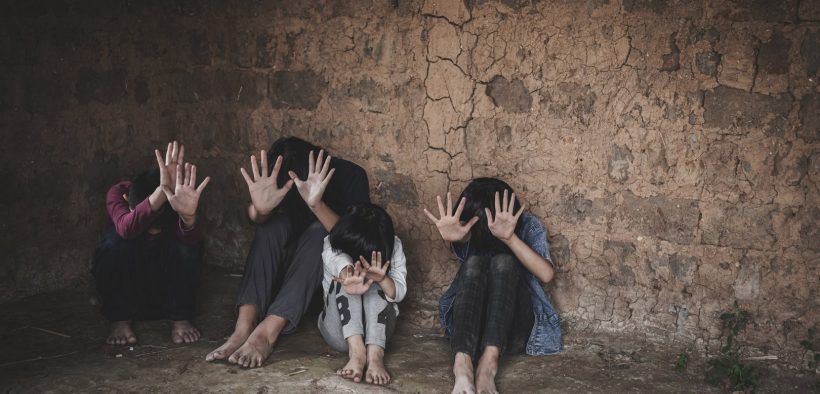Human Trafficking and Child Victims
Share

Human Trafficking and Child Victims
The extent of the violence they are exposed to, the consequences of this violence and the support services needed are very important. Due to their diversity, child victims constitute the most vulnerable groups among victims of human trafficking.
The sale or trade of a child; family pressure or kidnapping and forced marriage, forced labor or begging in any job for the purpose of paying debts or dependent, forcibly recruiting children / being forced into conflicts or being forced into military service, using children as a sex worker or in the production or demonstration of pornographic publications, in terms of human trafficking of children.
Child’s physical, mental, social and spiritual development suffer greatly due to exposure to human trafficking. In the UNODC (United Nations Office on Drugs and Crime) 2020 report, it is seen that one in three victims of human trafficking globally are child victims. However, it turns out that patterns regarding the age profile of victims vary widely across different geographies. In geographies with lower incomes, the age of children exposed to child trafficking also decreases in proportion to income. In this context, it can be said that the characteristics and underlying driving forces of child trafficking differ according to geographical and social contexts. Trafficked children identified in low-income countries are more likely to be exploited in forced labor. In contrast, children identified in high-income countries are more frequently abducted/engaged for sexual exploitation. Therefore, it can be concluded that the nature of child trafficking in low-income countries, such as Sub-Saharan Africa, is part of the broader phenomenon of child labor.
At this point, it should be noted that child labor and child trafficking are cases that can often be confused with each other. However, these two phenomena appear to be related and have similar determinants. Countries with a greater share of children among identified victims of trafficking are also countries where child labor is more prevalent. The broad cultural acknowledgment of children’s participation in the labor market serves as fertile ground for traffickers who wish to exploit children in their labor activities. In areas where communities are accustomed to sending children to work, it is easier to exploit children than in communities where child labor is generally not an acceptable practice. In such settings, victims of child trafficking can be hidden from view. In some socio-economic contexts, child trafficking can occur on a community scale, often involving family members. Families in need may encourage their children to work, and children feel the pressure to contribute economically to the family, leaving them vulnerable to abusive practices.
This In this context, considering the common situation of children who are trafficked, it is seen that the child; The family is in need of socio-economic situation, has a broken family structure, is alone or under protection, has emotional or family ties to a trafficker, has a mental, behavioral or neurological (MBN) disorder, is vulnerable and is easily manipulated, refugee common aspects are seen.
Indicators of Child Trafficking Incidents
- The child at risk of not having access to their parents, guardians or guardians
- Looks scared and behaves in a way that is not typical of children their age
- Having no friends your own age outside of work
- No access to education
- No time to play
- Separate from other children and substandard accommodation
- Eating separately from other members of the “family”
- Giving leftovers only
- Working in jobs not suitable for children
- Traveling unaccompanied
- Traveling in groups with unrelated people
- The presence of children’s clothing, often worn to engage in illegal commercial sex work
- The presence of toys, bedding and children’s clothing in inappropriate places such as brothels or bars
- An adult claiming to have “found” an unaccompanied child
- Finding unaccompanied minors carrying a telephone number to call a taxi
- Discovery of cases involving illegal adoption
The number of human trafficking victims, which was approximately 31,000 annually worldwide in 2008, has exceeded 100,000 annually due to the socio-economic effects of the Covid-19 epidemic, when we look at the period of 2018 and beyond. It is predicted that the global increase in human trafficking will continue. Although it happens in every country and every region, human trafficking remains a covert crime, with traffickers working in the dark corners of the internet and in the midst of the global economy to trap victims for sexual exploitation, forced labor, domestic slavery and other forms of sexual exploitation. Five of every 10 victims identified worldwide are adult women and two are girls. Again, approximately one third of the identified victims are both girls and boys, while 20 percent are adult males. Most of the women identified in 2018 were abducted for the purpose of sexual exploitation, while the men identified were trafficked mainly for forced labor. However, a significant proportion of men identified have been trafficked for sexual exploitation or other forms of exploitation. In this context, recent research shows that LGBTQI+ children and young adults may be particularly vulnerable to and, in some cases, victims of trafficking for forced labor and sexual exploitation.

